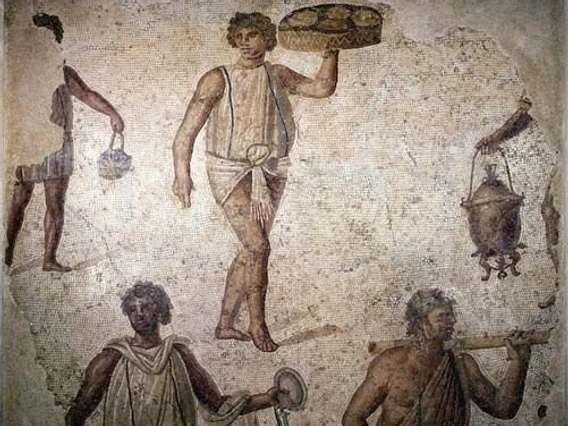
Long before the coming of the Greeks and Romans, the peoples of Asia Minor (modern Turkey) honored powerful earth goddesses as a key element of their religion. The oldest figurine found so far dates to 14,000 BCE (no image available). The two images above date to around 6000 BCE–both were found at a site in south central Turkey called Çatalhöyük. Comparisons with other cultures have led most interpreters to view them as fertility goddesses, but this idea has been contested in recent years. Their corpulent forms probably symbolized prosperity in an era when food security could not be taken for granted. Note the feline figures on either side of the woman on the right–they will reappear in later images of goddesses from the region.

The period of the Hitttes (2nd millennium BCE) introduced to the historical record an influential category of ruler goddesses. These goddesses did not rule alone–they were part of a broader pantheon of deities, and most were consorts of male deities. But their duties extended much farther than fertility. The images above show the sun goddess of Arinna, who during the Old Hittite era was the chief deity of the state. The figure on the right is the goddess Kubaba, who was originally a human queen in Mesopotamia but over time became the chief goddess of the neo-Hittite state. From this era forward, ruler goddesses played a central role in the religious life of Asia Minor.

In the 1st millennium BCE, the goddess Kybele (or Cybele), whose origins can be traced to the region of Phrygia in central Turkey, emerged as the preeminent deity of Asia Minor. Her name may have been derived from the earlier Hittite goddess Kubaba, but her traits and powers were much broader that hers. She embodied in herself all of the powers of wild nature, ruling over both animals and humans. She is usually portrayed seated on a throne and wearing a turreted crown, with lions on either side or pulling her in a chariot, as shown in the images above. All of these emblems symbolize authority, both divine and human.

Roman image of Cybele, the “Great Mother” Tomb relief of a gallus with tools of trade
Temples of Kybele could be found all over Asia Minor by the middle of the 1st millennium BCE, and in many other places as well, including Athens. She was also served by wandering priests called galli who carried her statue around with them and engaged in frenzied public rituals that involved music and dancing and culminated with one or more of them castrating themselves as a final act of dedication. The Romans were disgusted by these bizarre rituals, but they were so impressed with Kybele’s power that they conscripted her to assist them in their war against Carthage, erecting a temple for her in Rome in 191 BCE. She was the first non-Roman goddess to be worshipped in this way in Rome.

Image of Artemis from Ephesus Image of Aphrodite from Aphrodisias
As Greeks and Roman came into contact with Kybele and her powerful reputation, they began to assimilate her with their own goddesses in both appearance and powers. The image on the left is the famous cult statue of Artemis from her temple near Ephesus. In Greek myth and sculpture, Artemis is a huntress who is shown running with flowing robes in company with wild animals. This image is nothing like that. The same is true for the statue of Aphrodite on the right, which is vastly different from the standard Greek image of her as a voluptuous nude. Both include elements commonly associated with Kybele, especially the wild animals on their garments and the turreted crown. Both were also worshiped as the patron deity and protector of their cities, following the pattern of Kybele and other ancient goddesses of Asia Minor.
Both Kybele and Artemis play a role in the first two books in my A Slave’s Story trilogy, which depict a visit to the temple of Artemis at Ephesus and a ritual with the galli at the temples of Kybele and Pluto at Hierapolis. The latter in particular is not to be missed!



